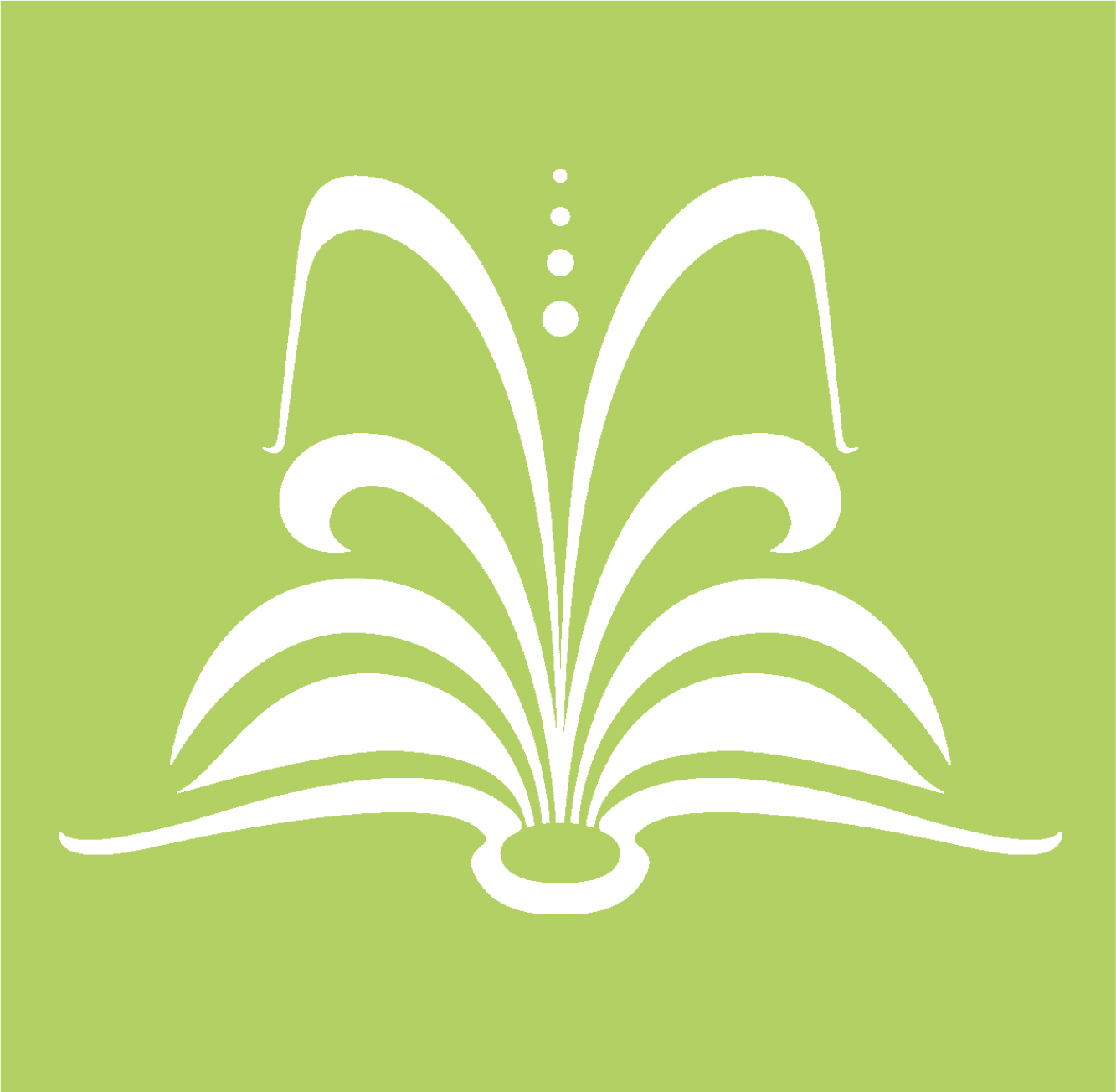by Lisa Di Tommaso | Nov 29, 2025 | Uncategorized
Click on these links to see the lists of books purchased by the library in the Autumn and Winter of 2025.
Don’t forget you can make your own suggestions via the book at the front desk – or just get in touch with library staff. The Book Selection Committee meets three times a year and considers all suggestions.
If you’d like to read anything on the lists, just contact library staff and we’ll reserve it for you.
New Fiction purchased for The Morrab Library – Autumn/Winter 2025
New Non-Fiction purchased for The Morrab Library – Autumn/Winter 2025
by Lisa Di Tommaso | Nov 26, 2025 | Blog, Morrab Library
Have a look at our gift options – they are not only unique, but all help to support the work of the library.
Christmas Cards
This year, we have gone retro, bringing back some of our most popular cards from previous years, and introducing a special new addition from our Hilda Quick collection.
Single cards – £1.50 each
Three cards of any design – £4.00
Four cards of any design – £6.50
Find out more about each of the designs here.
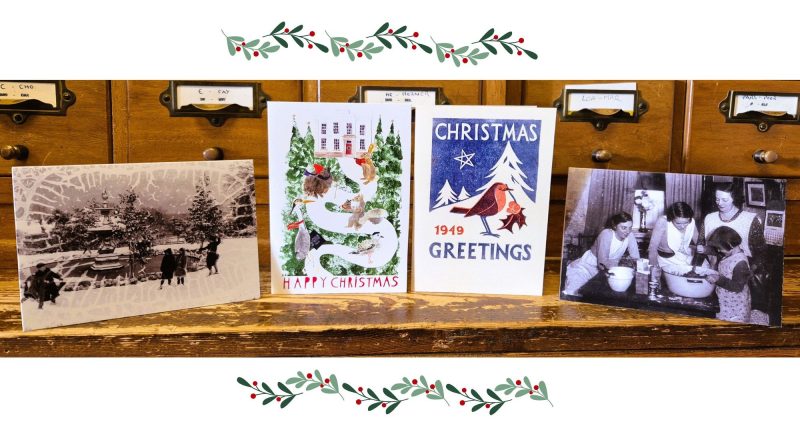
Tote Bag
Made from natural cotton with long sturdy handles, the bags are perfect for carrying your library loans home with you, or filling up with treats and gifts from one of our Fairs.
The beautiful image of the library, nestled within the Morrab Gardens, was designed by our very own library assistant, Harriet-Jade Harrow.
Bags cost £10 each, and proceeds will go to the care and maintenance of your library and its important and special collections. Why not buy one for yourself, or as a Christmas gift?
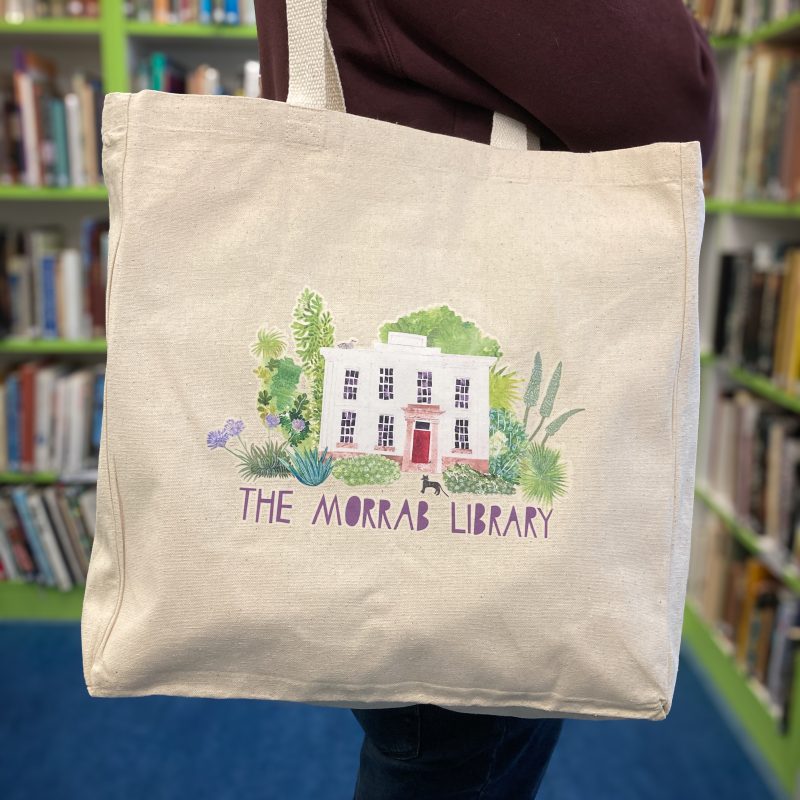
Gift Membership
Share your love of Morrab Library with friends or family. Gift vouchers are available – just contact library staff. £40 for Individual Membership, £50 for Household Membership for 2026 (or £20 for students). Find out more about membership here.
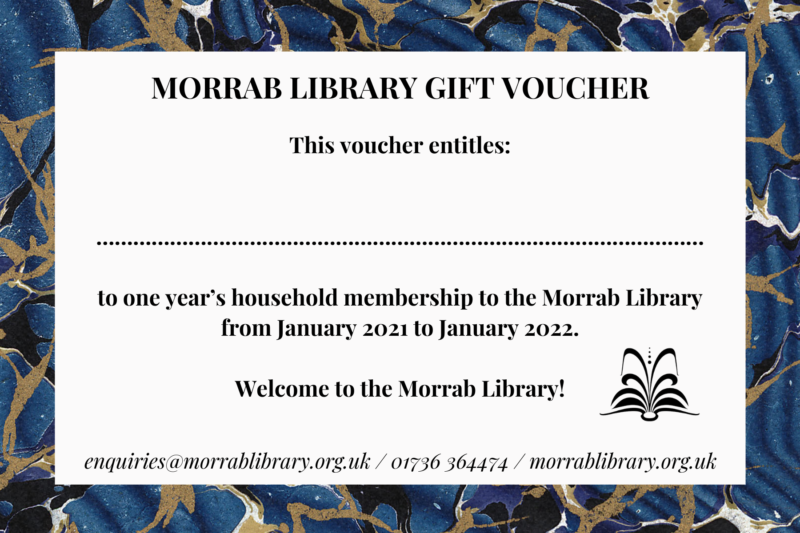
Working Lives
Our Photo Archive volunteers have selected a range of 26 beautiful and extraordinary images from our collections to create a book depicting the working lives of local people and families. The first in a series. On sale for £8.

Morrab Library pens
A great little stocking filler! We have Morrab Library branded pens available to buy from the library for £2.50 each. They come in a variety of colours and write in black ink.
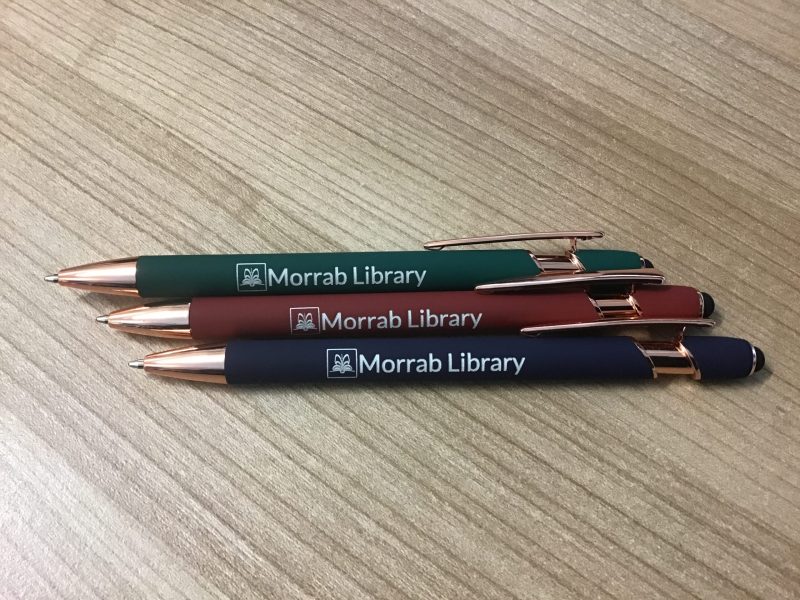
Hilda Quick Notecards and Postcards
The library is fortunate to hold an archive of works by Hilda Quick (1895-1978), a remarkable Cornish artist, illustrator, wood-engraver and ornithologist. We are delighted to share some of this legacy with you through two new sets of caThe library is fortunate to hold a large rds, available exclusively from the Morrab Library.
The “Happy Housewife” Notecards – A witty and ironic series of five prints showing the housewife hard at work: clearing cobwebs, fetching milk, bringing in the washing, repairing iced-up pipes and carrying coal. Printed on high-quality matt finish card. £2.50 each or £10 for the full set of five.
The Hilda Quick Postcards – Five designs showcasing the range and beauty of Hilda’s art — from gulls and seaweed to dandelions, farm scenes and dancing farmers. £1 each or £4.50 for a set of five.
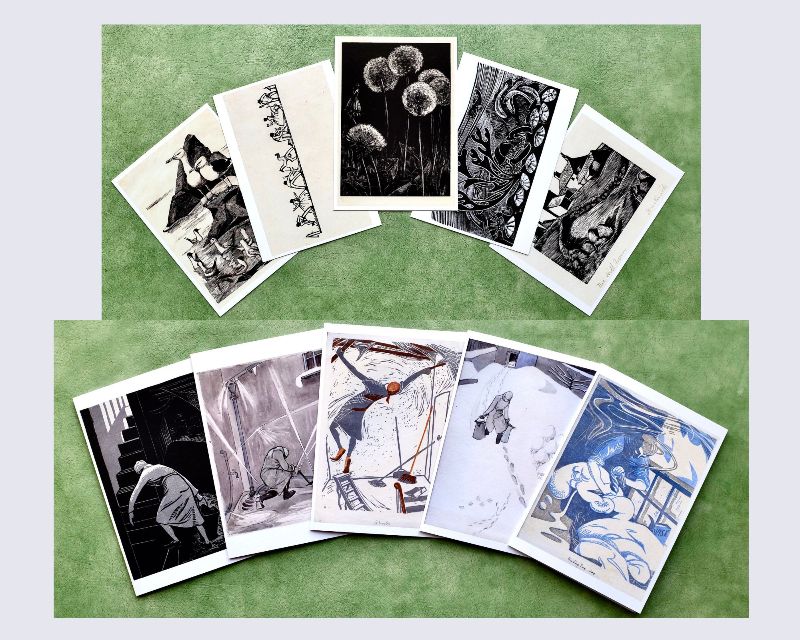
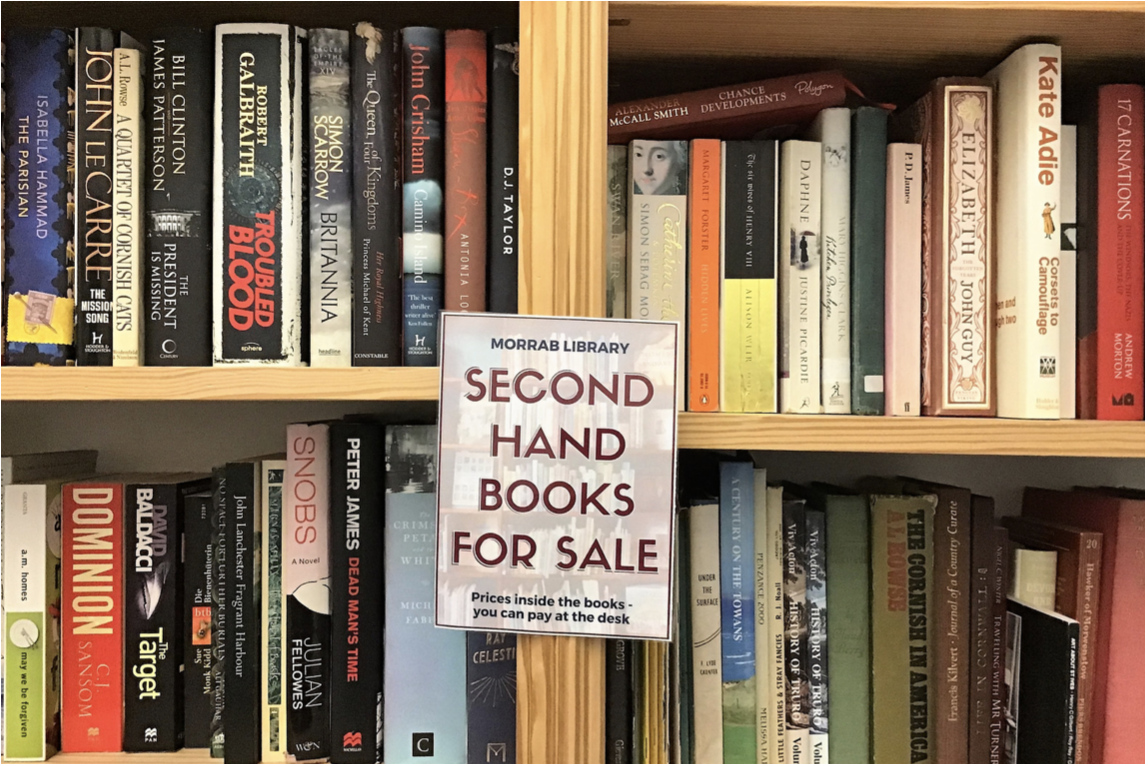
Second-hand books
Browse our second-hand book shelves for that stocking filler for friends or family.
John Trigg prints
Choose a high quality print from one of twelve beautiful images, taken from the collections of drawing books donated to the library by the artists John Trigg. £65.
Take a look at the prints here or pop in to view them in the cabinet at Reception.
Morrab Medicament
The essence of Morrab Library captured in a bottle..
The Morrab Medicament – a little capsule for well-being.
We all wish we could take a bit of our beautiful library home with us. Now you can! Each bottle contains one of four orignal prints of a library scene by local artist Sue Lewington, and one of four original poems, as well as a magical library charm, written by author Steph Haxton.
Purchase your limited edition Medicament from the library for just £10
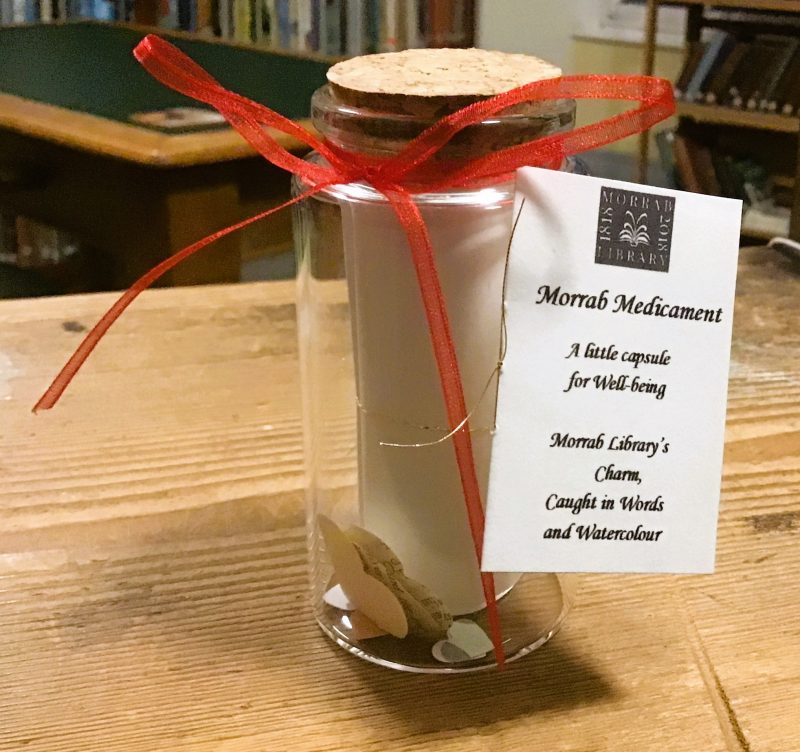
Penzance 1841 Map
A high quality reproduction of the 1841 map of the Borough of Penzance. £20
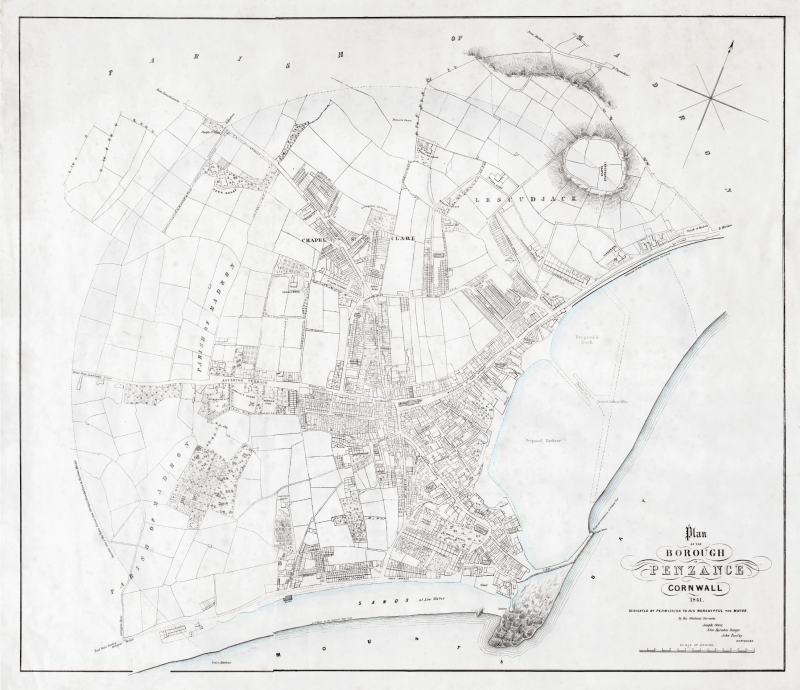
by Lisa Di Tommaso | Nov 13, 2025 | Blog, Sale

We would like to introduce you to the library’s new tote bag – on sale now at the library.
Made from natural cotton with long sturdy handles, the bags are perfect for carrying your library loans home with you, or filling up with treats and gifts from one of our Fairs.
The beautiful image of the library, nestled within the Morrab Gardens, was designed by our very own library assistant, Harriet-Jade Harrow.
Bags cost £10 each, and proceeds will go to the care and maintenance of your library and its important and special collections. Why not buy one for yourself, or as a Christmas gift?
For an additional postage charge, we can send bags in the mail to you – just contact library staff at enquiries@morrablibrary.org.uk for more information and to order.
by Lisa Di Tommaso | Nov 12, 2025 | Uncategorized
The Library’s Christmas card selection for 2025 is now available for purchase.
This year, we have gone retro, bringing back some of our most popular cards from previous years, and introducing a special new addition from our Hilda Quick collection.
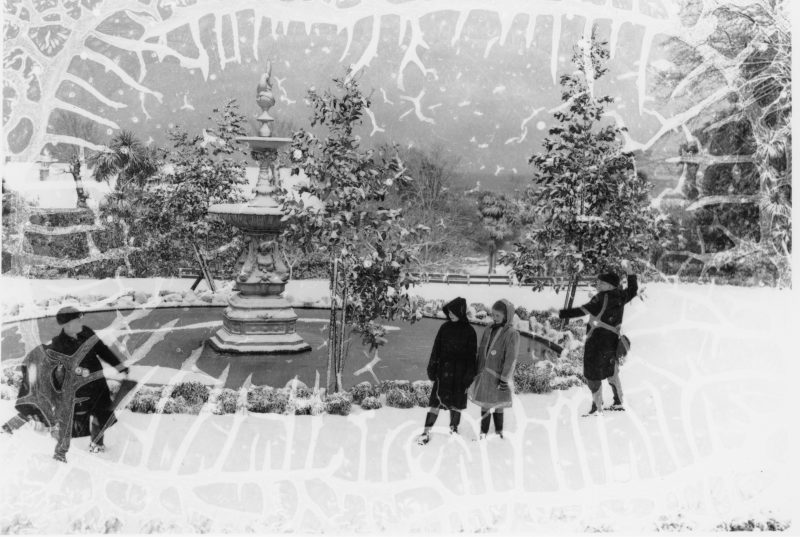
Our first card shows children playing in a snowy Morrab Gardens just outside the library in the 1960s, an image from our historic Photo Archive collection. The emulsion damage to the negative serves to enhance the festive feel of this photo.
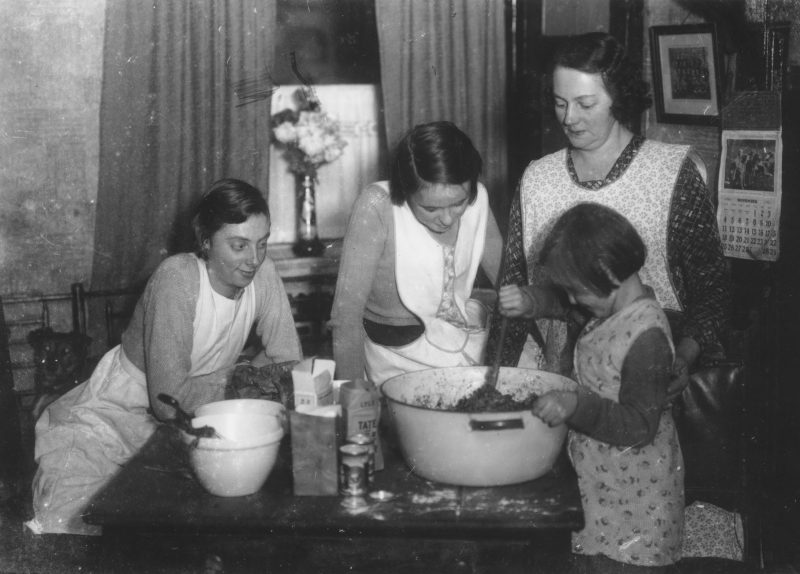
Our second is the lovely scene of the Richards family of Penzance and their friends stirring up the Christmas Pudding in 1934.
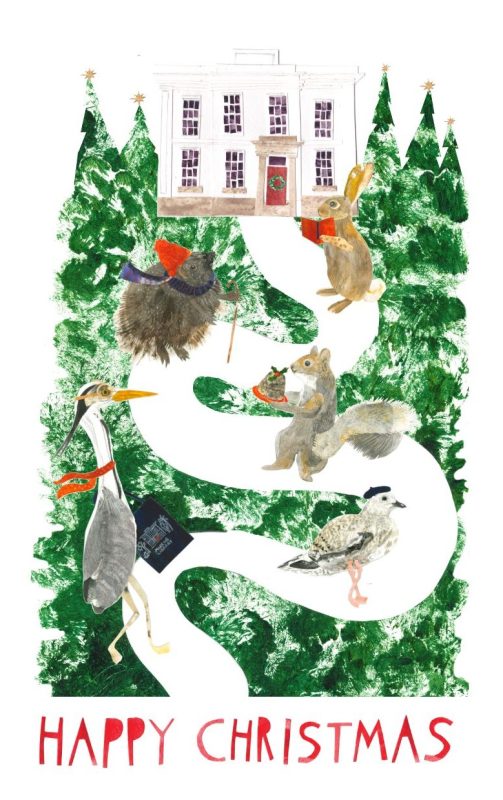
Next up, our own Harriet-Jade Harrow’s Christmas card of 2023, featuring the Morrab Gardens wildlife visiting the library.

And finally, we are delighted to introduce our new addition, a reproduction of a Christmas card designed and used by local artist Hilda Quick in 1949. Her beautiful woodblock engravings and paintings are held in the library’s archive.
Prices
- Single cards – £1.50 each
- Three cards of any design – £4.00
- Five cards of any design – £5.50
We are happy to send you your order in the post for a small additional postage fee, if you can’t make it in to collect them.
Drop in, or contact the library at enquiries@morrablibrary.org.uk to find out more or to stock up.
by Lisa Di Tommaso | Aug 26, 2025 | Blog, Morrab Library
One of our Library volunteers, Michael Malone-Lee, recently happened upon an unusual, witty, anonymously published poem in an innocuous volume in the Theology Room, dating from 1811.
Enchanted and intrigued, Michael delved deeper to uncover its author, the Revd. C. Valentine Le Grice (1773-1858), and explores the background to his entertaining piece, The Petition of an Old Uninhabited House in Penzance to its Master in Town.
The poem is a lament for the past in which the poet contrasts the ancient, ruined house with the contemporary gentrification of Penzance, a subject perhaps still of relevance today.
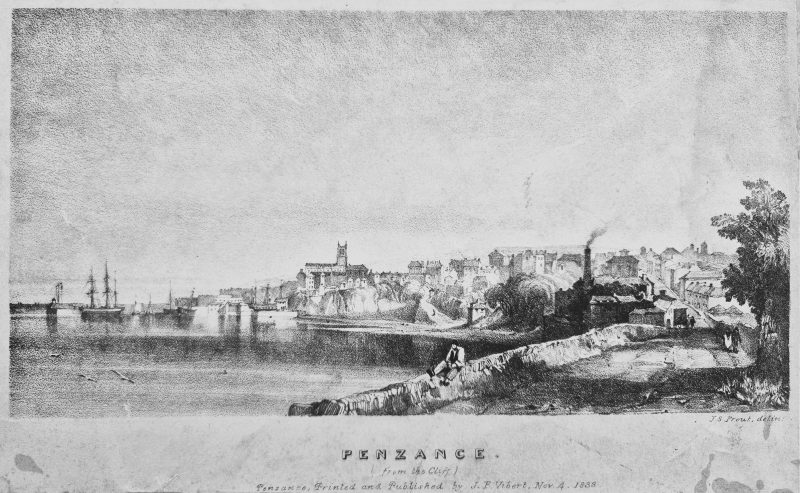
A view of Penzance, printed and published by J.F. Vibert, 1833 (MOR/VIV/16)
